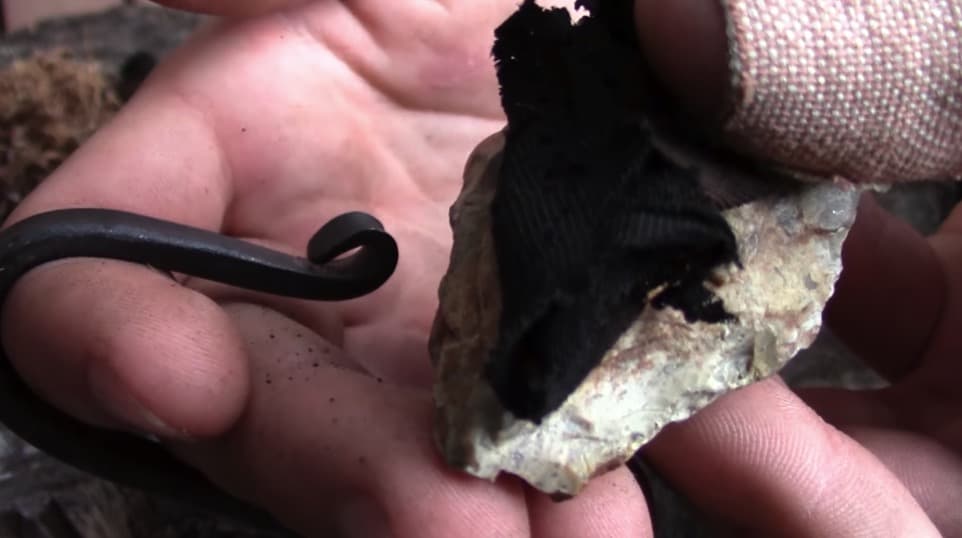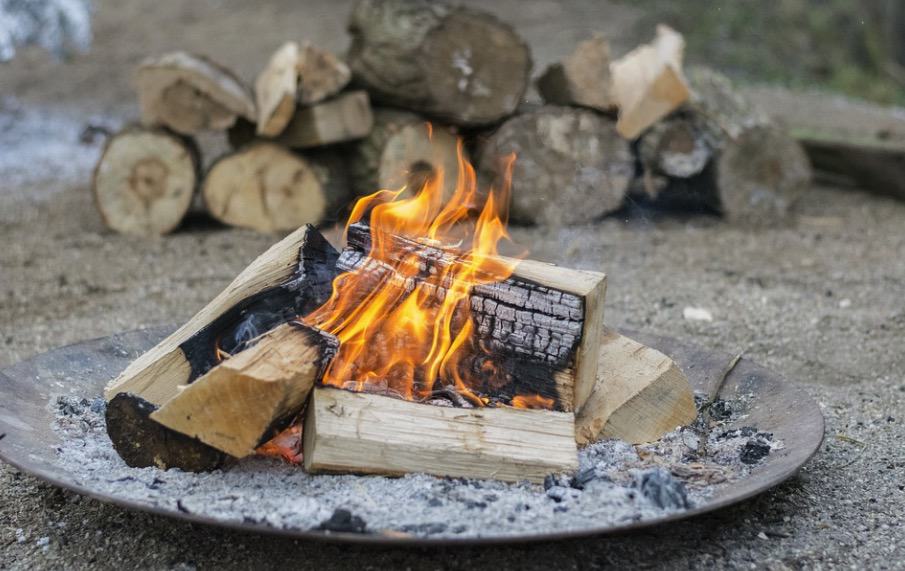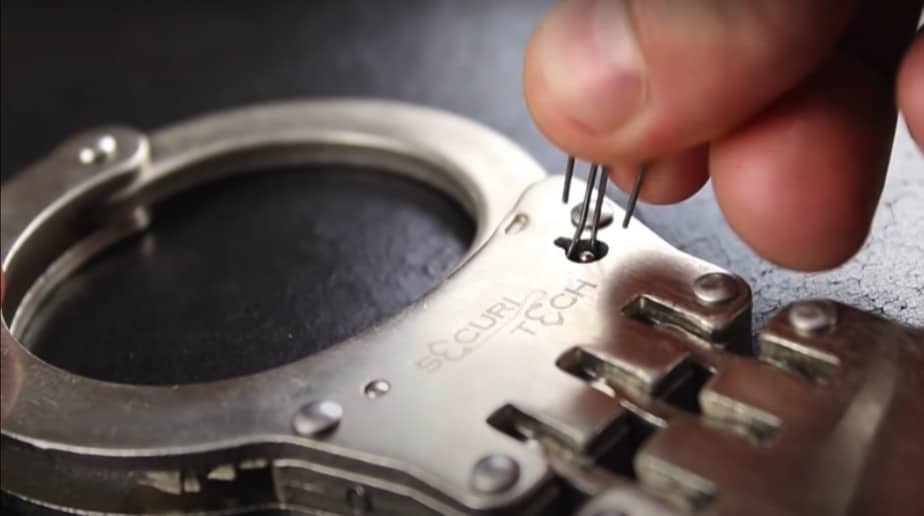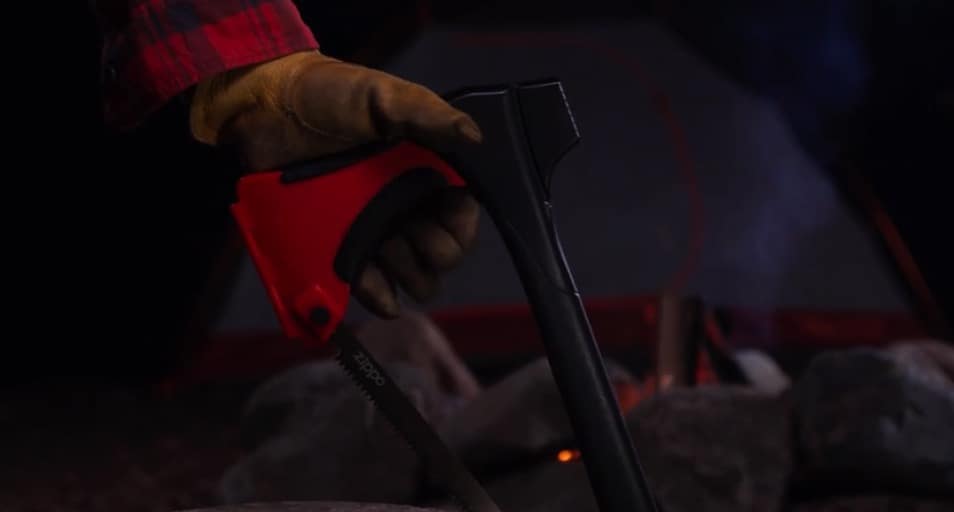How To Start A Fire With Flint And Steel
- Get link
- X
- Other Apps
How To Start A Fire With Flint And Steel

Share this article: Bugoutbill.com is independent – we research, test, and rate the top products to help you make the right buying choice. We sometimes use affiliate links and may receive a small commission on your purchase. Learn more…
Overview
What do you think will happen if you’re out backpacking in the woods and need to build a fire, but all of your matches are soaked?
Hopefully, you’ll never be in a situation where you don’t have any matches or lighters and have to ask yourself, “How do I build a fire without sparks?”.
Knowing how to build a fire is a valuable skill for an outdoors enthusiast and an on-the-go traveler like me. It becomes even more important in the event of a possible survival emergency.
Apart from that…
We always think of fire as basic, whether we like it or not, since we can always have our matches.
However…
There are times when environmental conditions, such as a storm or rain render matches worthless.
Unfortunately…
These scenarios that render matches worthless are the same ones in which we will require fire.
With this in mind…
Learning to make a fire with alternate methods, such as flint and steel, should be one of the most valuable skills to have if you ever find yourself in a survival position with harsh conditions. Your difficulty would be solved if you had some flint rock.
A valuable skill to have is the ability to start a fire with flint and steel. It requires extremely few resources and yields rapid effects. I was fortunate enough to marry an outdoor enthusiast who taught me how to accomplish this.
So…
I’ll share what I’ve learned through her instructions and guidance and my years of expertise utilizing flint and steel to make fire.
I’ll tell you exactly what resources I utilized and my actions to achieve my first flames in this post.
Well…
You’ll also learn how to start a fire with flint and steel by the end of this article.
Let’s get that fire burning!
Material Used
Table Of Contents
Table of Contents
1. Flint and Steel Kits

To start a fire with flint, you’ll need the following:
Flint and Steel Kits
To define flint…
Flint is a sedimentary cryptocrystalline type of quartz that occurs in chalk or marly limestone and is classified as a variation of chert. Flint was used to producing stone tools and to light fires in the past.
In addition to that…
Flint isn’t a single rock; it’s more of a loose family of rocks that range in hardness from eight to ten on the Mohs scale.
Here’s something else…
The flint may need to be “dressed,” or knapped, with a hammer or other flint to obtain that right edge. A flint pebble that is not properly edged will not operate.
Here’s a kicker:
It is a popular misperception that the flint particles create a spark. This is due to the ordinary person’s belief in the small dark flint in a disposable lighter and the steel wheel, which does not wear while the flint does.
Steel
The conventional “C” shaped steel striker with a piece of flint is a common kit for traditionalists attempting to replicate methods from the past. While practice makes perfect, I’ve discovered that there are more efficient kits to use if my life depended on starting a fire.
Take this into consideration…
Before being lost, a properly treated steel should produce thousands, if not millions, of sparks. You will not be able to wear one out. Before it can be used again, the steel must be re-tempered if it becomes too hot.
Related: How To Escape From Handcuffs
2. Char Cloth

Charred cloth, also known as char paper, is a tinder material with a low ignition temperature used to start a fire.
Char cloth, essentially linen or cotton cloth burned in a low-oxygen atmosphere, is the ideal material for starting a fire (like the small tin in the above illustration).
A small hole at the top allows smoke and pressure to escape while oxygen from totally burning the linen.
Just a little tip:
To prepare char cloth, fill a small airtight container with 2-inch square linen or cotton patches.
Following that…
You’re all set to embark on your new journey.
Related: Best Window Security Locks
3 - Tinder

Tinder is a flammable material that can be used to ignite a fire. Tinder is an open, finely split substance that glows when exposed to a shower of sparks.
Also…
Anything that will catch fire if a spark hits on it – dryer lint, dried grass, etc.
One thing to keep in mind is…
Small twigs, birch bark, dry leaves and grass, paper, punk wood, and cotton balls are utilized as tinder nests worldwide.
Related: Best Baby First Aid Kit
Techniques

Making a fire with flint rods and steel includes some techniques, much like any other survival skill. I’ll share some of what I’ve learned over the years with you.
Even though the idea and principles are straightforward, starting a fire with this method is more difficult than it seems. It will take some practice to light a fire with this equipment regularly.
Nevertheless…
Anyone should be able to build a roaring fire once they’ve mastered the technique and have a basic understanding of the equipment.
The right striking form is one thing you’ll need to understand. Make sure you strike the flint at a glancing acute edge and angle with the steel.
Moreover…
Strike it hard enough to help shave the metal off more effectively. It only takes around 5 minutes of practice to master the technique.
Isn’t it simple?
Nothing is as it seems…
Strike the steel against the sharp edge of the rock with a fast downward motion to generate sparks. In addition to having the burnt fabric in the tinder bundle, try pressing a little piece against the flint rod at the striking sharp edge with your thumb.
Using this flint and steel method can significantly improve your chances of capturing a viable spark.
How to Start A Fire With Flint And Steel Step By Step Guide
You may simply start a fire using the common items you have at your homes, such as cloth, cotton balls, or a lighter.
Having an ideal flint and steel on hand outdoors is usually a smart idea.
To ignite a fire with flint and steel, follow these simple steps that we’ve prepared for you:
-
Prepare your Tinder Bundle
You may now build a tinder nest or bundle, often known as a “bird’s nest,” now that you know what a tinder nest is. You may do this using a variety of materials, including
- Birch bark, cottonwood, cedar, and tulip poplar trees all have bark.
- Dead grasses and dried leaves
- shavings of wood
- Small twigs with a diameter of up to half an inch
- Cotton swabs
Tip:
Make sure your materials are completely dry.
And then…
Make a circular bundle out of the nest and use it with your char cloth. This nest can also be placed in an existing fire ring or fire pit.
Be aware that the shavings and dry grass will soon fire, so be prepared!
-
Use your Char Cloth
Cut pieces of linen or cotton material and place them immediately near the sharp edges of the flint. Make these squares about three square inches in size and fluff up the edges so they may catch flying sparks.
And then…
Place the burning char cloth within the bird’s nest or tinder bundle once the sparks have sufficiently heated it.
-
Flint Shavings
Now, take your flint and, if necessary, a camping knife, and scrape some of the flints off one side (if sparks fall and appear, flip it over; you’re on the incorrect side).
In the tinder nest, you should be making a beautiful small mound of flint shavings. A nickel-sized amount of shavings should suffice, and you may easily add more if necessary.
A little shaving of steel is created when a steel’s struck against the edge of a sharp, hard rock, and the steel ignites due to all that energy.
It’s now time to light it.
-
Light the Fire
You’ll now use the side of the flint that produces sparks. Hold the flint near to your tinder so that the sparks drop on it. If you don’t see sparks straight away, scrape a little harder.
And then…
Add some of the smaller twigs once you have a little flame. Continue to add larger bits of fuel until the fire started. The fire may go out, and it’s also crucial to keep your fire under control.
Place your tinder near the fire building you’ve already built. Depending on your tinder, placing it on a piece of bark to help it go into the fire structure once lit may be a good idea.
That’s all there is to it; you lit a fire with flint!
-
Feed the Fire
To keep the fledgling sparks and embers from going out, place the burned fabric in the center of the nest and cup it. You can gently blow with a long, forceful breath at this stage. Short, staccato bursts of breath should be avoided since they may extinguish the budding sparks.
Feed the fire as the flames expand, then add small logs after they’re lit. You’ve just made your best flint and steel survival tool!
Troubleshooting
My initial attempt at employing this strategy was unsuccessful because it did not function. Perhaps that will happen to some of you as well. Continue reading if nothing happened or if it didn’t work. If that worked, you’re done, and you deserve a pat on the back!
But we’re not finished yet.
Although flint and steel is an excellent fire-starting tool, it does have a learning curve. While the flint and steel procedure isn’t as precise as friction fire, it still requires some steps and structure to get from spark to flame.
Here are some suggestions that may be useful:
Are there no sparks?
Maybe your flint isn’t as sharp as it should be. A sharp flint edge will assist in scraping small metal particles from the steel striker, resulting in a spark.
or perhaps…
You’re using the wrong technique. The flint may slice the steel off using the skill of flicking the wrist in a good arc.
Can’t catch a spark despite having sparks and nice char cloth?
Fold the char cloth over the flint to increase the vertical surface area of the char cloth, which will help it catch a spark.
Do you have dry wood and kindling?
Another issue could be that the tinder nest isn’t completely dry. Moisture in the air might be a problem in wet or humid situations, so make sure the tinder is dry.
Tip: Save any surplus materials for future fires. At the very least, you’ll have some dry stuff on hand if the weather gets severe.
Does the fire get too much wind? Do you have enough flint shavings or tinder in your tinder bundle?
The bundle might be smaller in warmer weather or when using fine materials. The tinder bundle should be larger if the weather is cold and damp.
In addition to that…
Try blowing gently on the glowing pieces if the fire starts but doesn’t keep going. When blowing it into flame, be careful not to get too much moisture in your breath by blowing straight on or too near to the char cloth.
Ultimately…
If you’re having problems with the flint and steel, go over the procedures again and try to figure out where you’re getting stuck.
It takes skill and perseverance, but the payoff will be more constant flames, sparks, and fires.
Related: Survival Gear
Conclusion: How to Start a Fire with Flint and Steel

Knowing how to light a fire using a flint is handy and may save you a lot of time and aggravation. Unlike matches, flint may be used in practically any scenario, and it won’t be ruined if it gets wet.
With this in mind…
We hope we were able to assist you and teach you some new primitive skills.
One of the simplest methods for making fire is to use flint and steel.
To conclude…
Choose the flint and steel kit that best suits your system, practice with it, and remember to carry it along on your trips. Matches and lighters have their advantages and disadvantages. It’s exciting to start a fire using flint and steel, and it’s a crucial outdoor survival skill to have. The best aspect is that you won’t need to bring too many extra materials with you.
Similiar Posts

How To Start A Fire With Flint And Steel
What do you think will happen if you’re out backpacking in the woods and need to build a fire, but all of your matches are soaked? Hopefully, you’ll never be in a situation where you don’t…

How To Escape From Handcuffs
I bet you agree that a good day can go bad at any given time. So, being prepared for the worst case scenario becomes important, right? For example, you find yourself chain in a place, and…..

Best Credit Card Knife: Definitive Guide 2021
Share this article: Share this article: Bugoutbill.com is independent – we research, test, and rate

About Author
Lorem Ipsum is simply dummy text of the printing and typesetting industry. Lorem Ipsum has been the industry's standard dummy text ever since the 1500s, when an unknown printer took a galley of type and scrambled it to make a type specimen book. It has survived not only five centuries, but also the leap into electronic typesetting, remaining essentially unchanged.
Author Name -
Original post here: How To Start A Fire With Flint And Steel
- Get link
- X
- Other Apps



Comments
Post a Comment